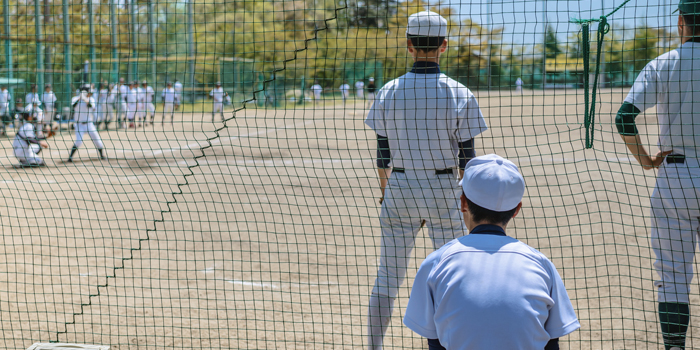
The majority of high school weight rooms across the country do not have anybody qualified coaching kids about proper training inside of them. It is usually left up to the sports coaches who MAYBE did some lifting back in high school or college. NEWS FLASH: This does not even remotely qualify anyone to be coaching others, especially if they were never properly trained themselves!
The result? Many young athletes, who are in the most important developmental years of their athletic lives, go through butchered makeshift programs with shitty lifting technique and absolutely no anatomical or physiological balance to speak of. Avoidable injuries come about, performance never becomes what it ultimately could be, and athletic careers are tarnished.
RECENT: Game Day Lifting (with Sample Training Session)
If you are one of the lucky ones who have a legit strength and conditioning coach running your program, don't take it for granted. Soak up everything you can, and build yourself both physically and mentally throughout your high school years. The things you learn in that weight room can and should carry forward throughout the rest of your life.
I have had the privilege of working with a local high school for almost seven years now. We have gotten the program to a point where there is consistent carry over from 8th grade all the way to 12th grade, and I am proud of what we have developed over the course of this time. I am also grateful to have an open-minded coach, who is always keen on learning about what we are doing so that he can do his football-specific coaching even better (We work with other sports there as well, but I'm focusing on football for this article).
We just completed the second week of our first offseason phase with football: General Physical Preparation and Movement Development. Though it might not be the flashiest, this is one of the most important training phases that any of these athletes will go through, as it lays the foundation that the rest of the house will be built on.
Here are the most important components of a good initial training phase after a long and rough season or for someone just starting a training program.
1. Fundamental Movement
Squat, hinge, push, and pull: These are movements that every athlete should be able to do effectively. We like to use goblet squats, pull-throughs, push-ups, and band or cable rows to teach these movements. Nobody touches a bar until they can successfully perform these movements with appropriate patterning and muscle activation. These movements form the base that pretty much every other athletic (or even daily) activity branches off of. Being able to effectively hip hinge while stabilizing the lower back and controlling the scapulae and trunk with arm movement are two things that will carry over into every other aspect of movement and performance.
2. Foundational Stabilization
Being able to stabilize the trunk and spine and prevent excess/unwanted motion throughout the region is a huge prerequisite to being able to effectively perform more complex movements (cool things like walking and running). We need to be able to brace and create stiffness between our ribs and hips in order to generate force out to our extremities to push someone back off of the line, throw a ball, or jump explosively.
If someone can't hold a plank for more than 10 to 20 seconds, there is absolutely no possible way that they are going to be able to run, jump, cut, throw, squat, or perform any other more complex activity effectively. Energy will leak right through their low back and power will not be optimally transferred to the extremities, which means weaker hits, slower sprints, shorter jumps, and open windows for injury.
We like to use planks and side bridges to get this foundation started. Three- to five-second holds for eight to twelve reps work great to start training these. When a plank is done correctly, we are training stability from the neck all the way down to the hips. The deep neck flexors, anterior shoulder stabilizers (serratus anterior), and the abdominals and glutes all need to work together in order to stabilize and prevent unwanted pelvic tilt/low back extension, scapular winging, and neck tilt.
RELATED: Advice for High School Linemen
With the side bridge, we are able to train each lateral side of the body to stabilize appropriately. The obliques, lats, quadratus lumborum, glute medius, an
d adductors all need to work together to generate the stability that we are looking for. All of this will give us a good base to build the rest of the fortress on.
3. Develop Scapular Control
Good scapular control is everything when it comes to shoulder health. We start developing this early on so that we can build on it the rest of the year and have healthy shoulders moving forward. If there is one thing that I've seen over the years with adults, it’s that not many people ever developed good scapular control, and if they did, they must've lost it at some point. This is often a huge reason many develop shoulder issues at some point in life.
Without control over the scapula, the glenohumeral joint is free to do what it wants, and what it wants usually is not good. This is how we get impingement, muscle overuse, and plenty of other things that we could do without. Taking care of this early on will not only help these athletes perform better and stay healthier now, but it will help set up a foundation into the future.
We need control in all planes of motion and angles. Protraction, retraction, upward rotation, downward rotation, elevation, and depression: We need to be able to feel and control all of these. When these are controlled and balanced, the humeral head can stay centered in the shoulder joint when we move our arms overhead, down, forward, backward, etc.
The first two that we start with are protraction and retraction, and we do this with two of our movement exercises from above: push-ups and rows. When we teach a row, we put an emphasis on leading with the shoulder blade and making sure that they can feel and control this prior to following through with the arm goes a long way into locking this pattern in. With the push-up, we emphasize letting the shoulder blades come together on the way down and spreading them apart as we come up. Spreading them apart takes care of the protraction.
Within programming, we want a good balance of each of these as we go forward with progressions. Y-variations work well to develop upward rotation, which is a very important function to have control of and is probably one of the most underdeveloped scapular activities that you will find.
We like to cue them to reach as they come up in order to engage and feel the low trap and serratus working together. This is a harder movement to sense but an important one nonetheless. Once the upward rotation is controlled, controlling the downward rotation on the way down is the next step. Elevation and depression may or may not be warranted for training, depending on the individual, and are usually addressed later on in programming.
4. Learn to Control Single-Leg Movement
Squatting and hip hinging, as mentioned earlier, are great and super important; but when it comes down to it, single-leg activity is key for most sporting endeavors. Whether we are walking down the boulevard, planting and cutting to change directions on the field, or running through the woods from the Big Bad Wolf, single-leg foot strikes are continuously occurring. We need to be able to control our pelvises, feet, and knees when these strikes occur.
The following progression works great as a single-leg squat/lunge progression:
- Split Squat using bodyweight, dumbbells, or chains
- Reverse Lunge
- Bulgarian Split Squat
- Step-Up
- One Leg Box Squat
Once these are mastered, we can progress into barbell work with any of these variations. Setting the arch of the foot, keeping the ribs and hips level, and keeping the knee in line with the hips and toes are all essential components to any of these single-leg variations. Once adequate single-leg performance is developed with these sagittal plane activities, it is important to eventually train in the frontal plane as well. We prefer to use lateral lunge and lateral step-up variations. After all, athletes need to be able to perform in multiple planes of motion.
For single-leg hip hinge progressions, the following works well:
- One-Leg Glute Bridge
- One-Leg Hip Thrust
- One-Leg Cable Romanian Deadlift
- One-Leg Romanian Deadlift off of a Box
- One-Leg Romanian Deadlift with Dumbbell
- One-Leg Romanian Deadlift with Barbell
- One-Leg Romanian Deadlift with Farmers Bar or Landmine
The same key elements for the single-leg squat progressions also apply here.
If we can develop good strength and stability with both single-leg squatting and hip hinging variations, performance and injury prevention will go through the roof.
5. Develop a General Strength Base
If you take nothing else from this article, please pay attention to this. Week 1 of training is NOT about jumping into the squat rack and pushing hard and heavy until you puke or fall over. This phase is used to develop some general strength and endurance qualities and build up a structural base. We need to get muscles, tendons, ligaments, and the nervous system tuned up and prepared for training again. A few sets of eight to twelve reps for the exercises mentioned above are a great and easy way to get both movement patterning and some muscle growth and strength developed at the same time. The body will thank us later, and when we do get to some heavier lifting, we will be ready to go to war.
6. Develop an Aerobic Base
Strength, power, and speed are great, sexy, and fun and all, but if you can’t utilize any of those fine qualities anytime after five minutes into a game because your conditioning sucks, they are rendered useless. Training your body to deliver and utilize oxygen more effectively is a big key to developing an optimal overall general physical base. Without this, your body will not be able to recover efficiently enough between plays, and you will get steamrolled after the first quarter.
LISTEN: Table Talk Podcast #15 with Phil Matusz
To do this, we need to spend a good amount of time with moderate-intensity aerobic conditioning:
- Aerobic capacity can be developed with 20 to 40 minutes of continuous activity at a heart rate of 120 to 140 beats per minute. We like to use circuits here. As an example, we’ll split athletes up into groups and have them go through three-minute stations of bear crawls, medicine ball slams, rope slams, and jumping jacks. Using exercises like these, we are able to train body mechanics and the heart at the same time, which is much more useful than moving aimlessly with repetitive motion on a treadmill or elliptical, which can create overuse issues and has much less carryover to their sport.
- Aerobic power can be developed with 30- to 90-second intervals at a slightly higher intensity but not high enough to make the body go into anaerobic mode. An example would be using the rope slam station and going for 60 seconds at a 150 to 160 BPM heart rate followed by a rest of 30 to 60 seconds and repeating for eight to ten rounds. With this modality, we are training the heart to pump more blood with each stroke and training it to handle higher intensities more efficiently.
Aerobic training creates a different adaptation in the heart than anaerobic training (higher intensities, working without oxygen). The actual chamber size of the left ventricle expands in response to aerobic work, allowing improved blood and oxygen flow, whereas the actual heart wall thickens in response to higher intensity anaerobic work. Making sure to have the right blend of these different energy systems with training is essential to heart health and performance. Check out Joel Jamieson’s works for more details on these adaptations.
7. Learn to Breathe Effectively
Breathing is the foundation of anything and everything that our body does, whether that is moving, recovering, freaking out, relaxing, or stabilizing during a heavy lift. If we never train the mechanics of our breathing, chances are that we probably aren’t doing it optimally and might even straight up suck at it. While there is a myriad of variations and exercises that can be effectively used to train it, an easy way to start is with 90/90 breathing.
To set up: Simply lie down and put your feet up on the wall while keeping your thighs parallel with the wall. Slightly tilt your pelvis so that your low back is flush with the floor. This position will ensure that your ribs and pelvis are level and stacked over one another so that your diaphragm is in an optimal resting position to drive good breathing mechanics.
To inhale: Maintain your rib and pelvic position as you inhale through your nose. As you inhale, you should feel your ribs expand in 3D all around your trunk — front, sides, and back. Both your abdomen and chest should expand. Please note that expansion is quite different from elevation and flaring. What we don’t want, and what most people will try to do, is for our ribs and chest to elevate excessively towards our head and flare up and out. So feel around the bottom of your ribs, make sure your back stays flush with the floor, and feel the difference.
READ MORE: 4 IG Exercises That Don't Suck
To exhale: Let all of your air out through your mouth. Using a balloon is a great way to teach a solid exhale. You should feel your ribs come down, back, and in on the exhale. Keep blowing until you can’t, and then pause. Just get comfy while your body releases tension and resets itself. After about a three-second pause, inhale again through your nose. You should feel a better expansion on each following inhale after each improved and FULL exhale. Start with a few rounds of four to five breaths.
This is a great way to start dialing in your feel and control of your breathing. Mastering this can help you drive better movement and stability and can also help you shift your nervous system into recovery mode after you are done training or competing. It’s also a great way to calm yourself down if you are ready to smash the car that is riding your ass even though you are going 10-over or smash the Prius that is going five-under in a single lane in front of you.
8. Understand How to Effectively Use the Glutes
The glute muscles (maximus, medius, and minimus) are arguably the most important muscle group in the body to have functioning properly. Teaching this at a young age can not only help performance tremendously but also prevent a boatload of issues later on down the road. Educating young athletes on how important they are in controlling knee position, developing power in lifting, sprinting and jumping, and protecting the low back can do sooo freakin’ much that it should be a sin to NOT talk about this. Here’s how we get our athletes started with this early on:
Teach them to feel what it's like to contract their glutes with glute bridges. Telling athletes to “squeeze them like you are pinching pennies before you leave the floor” takes care of the trick for most. If they can learn to initiate contraction before they even move, then they can really drive them effectively when they do bridge up.
Teach them to engage them along with setting the arch of the foot when they squat and hip hinge. “As you screw your feet into the floor, you will feel your glutes engage before you even squat.” Feeling them engage before movement and then tightening them up as they hinge or squat is a surefire way to get them working on all cylinders.
Teach them to feel what the knee does when the glute med does and doesn’t do its job. Watch the knee straighten out when the glute is cooperating (along with the arch setting in the foot), and then watch it collapse when the glute and arch go soft. This can then further carry over to foot strike mechanics with walking, running, and landing.
9. Control the Pelvis with Limb Motion
Foundational stabilization, as mentioned above, is huge (i.e., plank, side bridge abilities); however, I have seen many people who can plank for minutes on end completely lose their ability to maintain rib and spine position when limb motion is thrown into the equation (i.e., walking, running, throwing, etc.). This means that we need to go beyond those foundational exercises and develop the ability to stabilize between the ribs and pelvis while we move our limbs. There are a zillion progressions that can be used here, but two basics that we like to start with are bird dog, leg lowering, and dead bug variations.
WATCH: The Quadruped Row Exercise for Lat Isolation Issues
- Bird Dog: Many people butcher these by moving the low back way too much. We want the low back to remain stable while we move the arm and leg out and back in.
- Leg Lowering: Pushing into a wall can be a great way to activate a good abdominal brace. From there, we want to maintain the brace and back position while we lower the legs. This will train the obliques to stabilize and anchor the pelvis while the legs are moving. Progressing from alternating legs to lowering both legs simultaneously works well with these.
- Dead Bug Breathing: Lie on the back with both knees up towards the chest. Lower one leg down while maintaining a solid low back position. Inhale and exhale fully while the leg is out. Bring this leg back up and repeat with the other side. Training the ability to breathe with good diaphragm function while maintaining an abdominal brace is HUGE for so many physical activities. The moment we have to let go of our brace to take a breath is the moment that we are more vulnerable to injury and inhibited performance. Start building this control early on. Develop lumbopelvic control, and you will perform better and stay healthier.
What athletes do early on can be the difference between a long, optimal performance career and an early burnout from overuse and imbalance injuries. In the context of one off-season, taking the time to work on these things in the early phases of training will allow the more advanced phases to be more effective later on in the year. Taking some of these principles into account early on in young athletes training careers will help them prosper now and long into the future.
Header image courtesy of mtaira © 123rf.com
Nick Rosencutter, founder and owner of Rosencutter Ultra Fitness & Performance in Greenfield, Wisconsin, is a certified strength and conditioning specialist and certified personal trainer through the NSCA, a licensed massage therapist, full-body active release techniques provider with an elite provider designation, and is currently studying courses from the Postural Restoration Institute. Since graduating with a degree in exercise and sports science and strength and conditioning from the University of Wisconsin La Crosse and serving as the first-ever intern at IFAST, he has worked with hundreds of clients from all walks of life, ranging from elite and youth athletes to those who want to shed fat and improve their bodies. He heads strength and conditioning at Greendale High School and serves as a corporate ART soft tissue provider for multiple companies, including Emerson Climate Control, S.C. Johnson, Miller Coors, and AOA Orthodontics. Visit rosencutterultrafitness.com, and follow him @rosencutterultra on Instagram for more information.










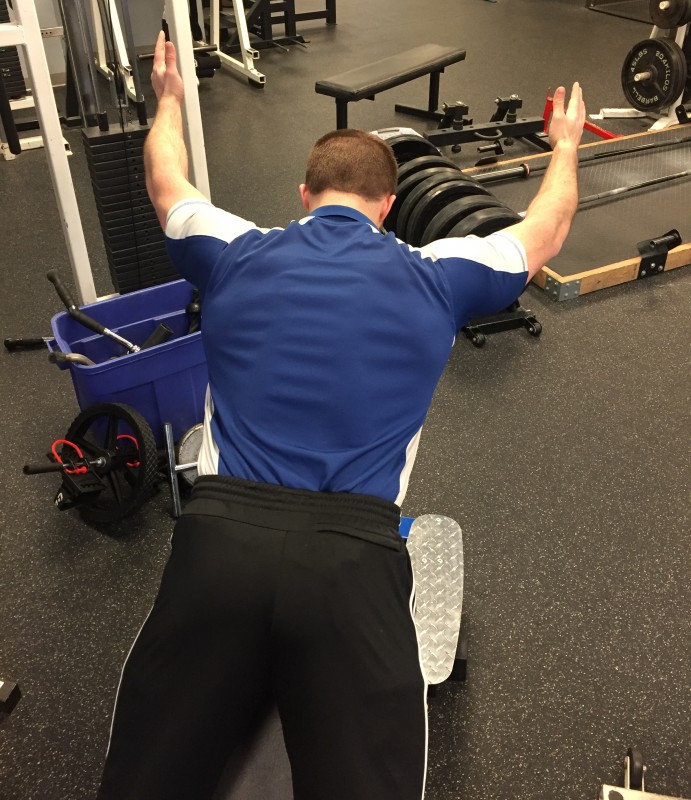
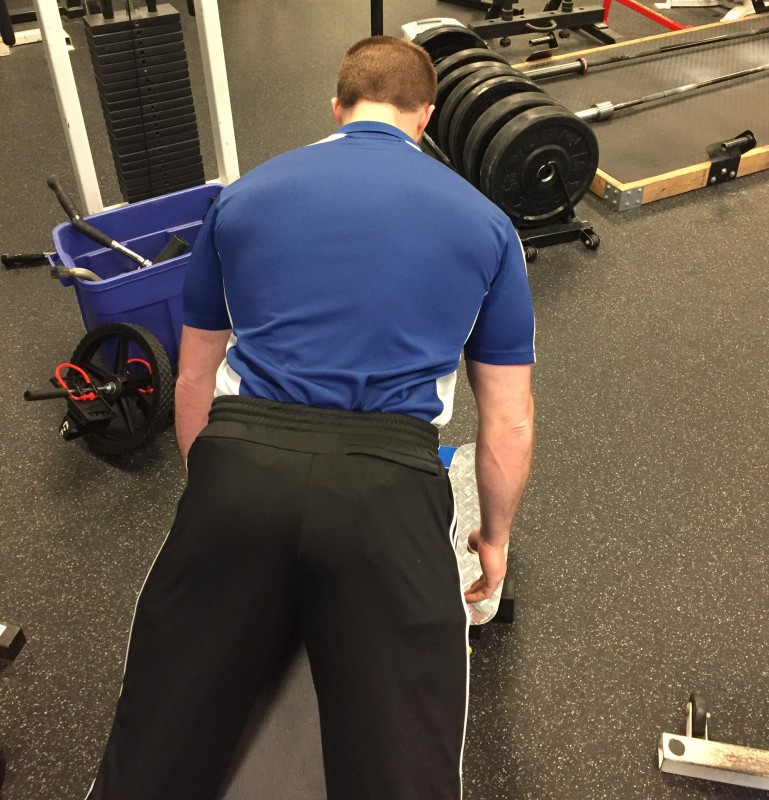
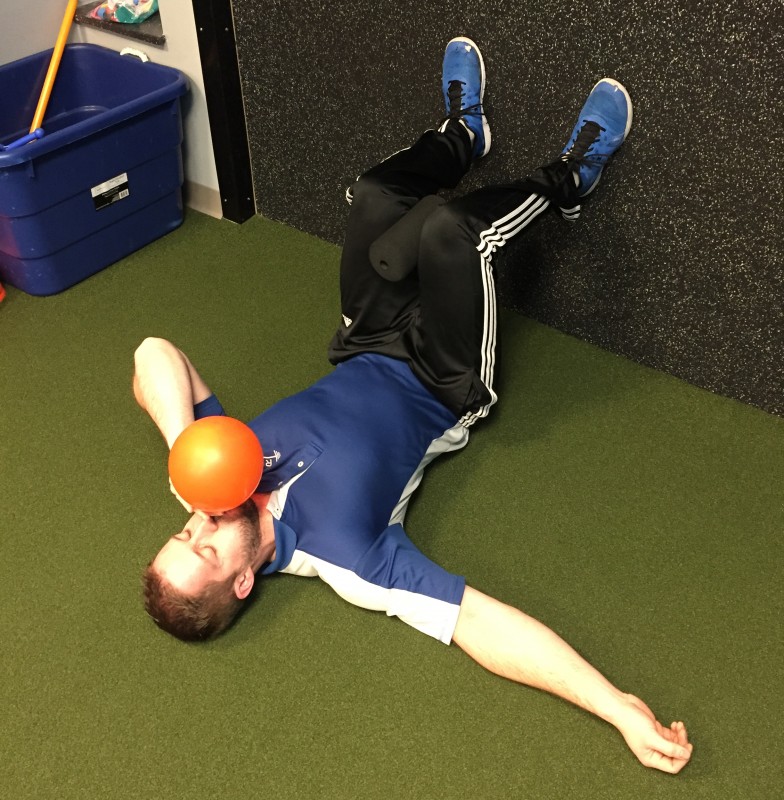
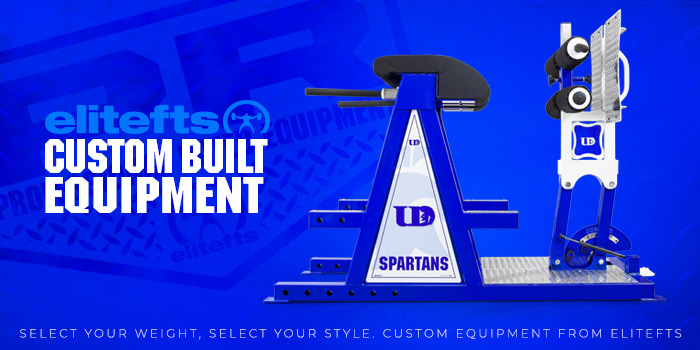
1 Comment